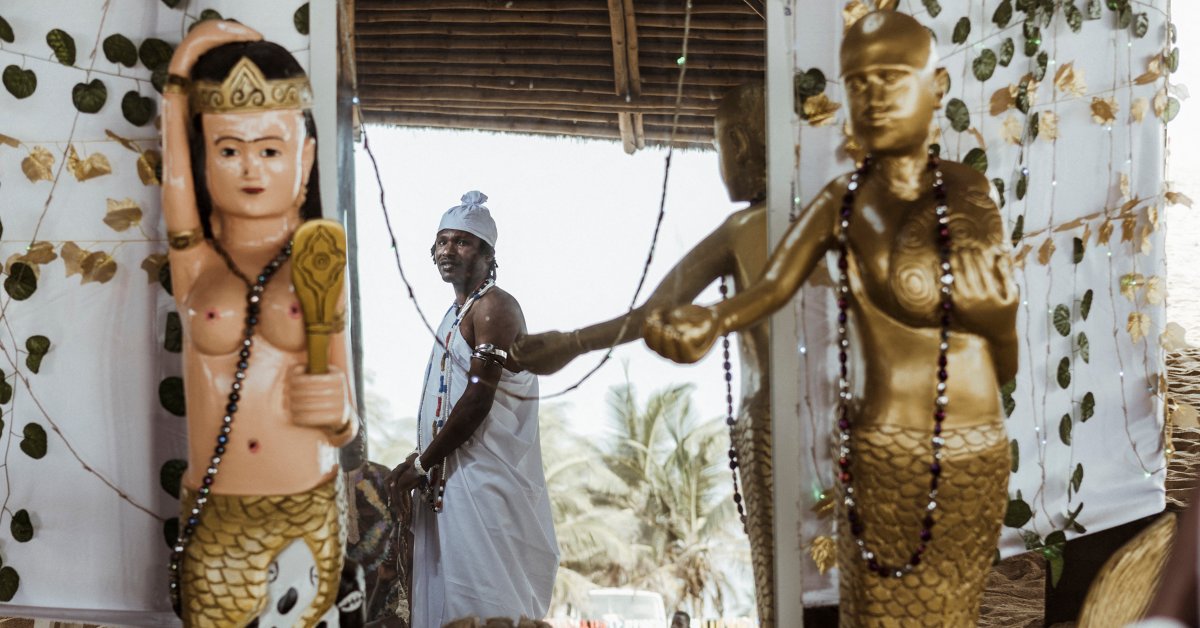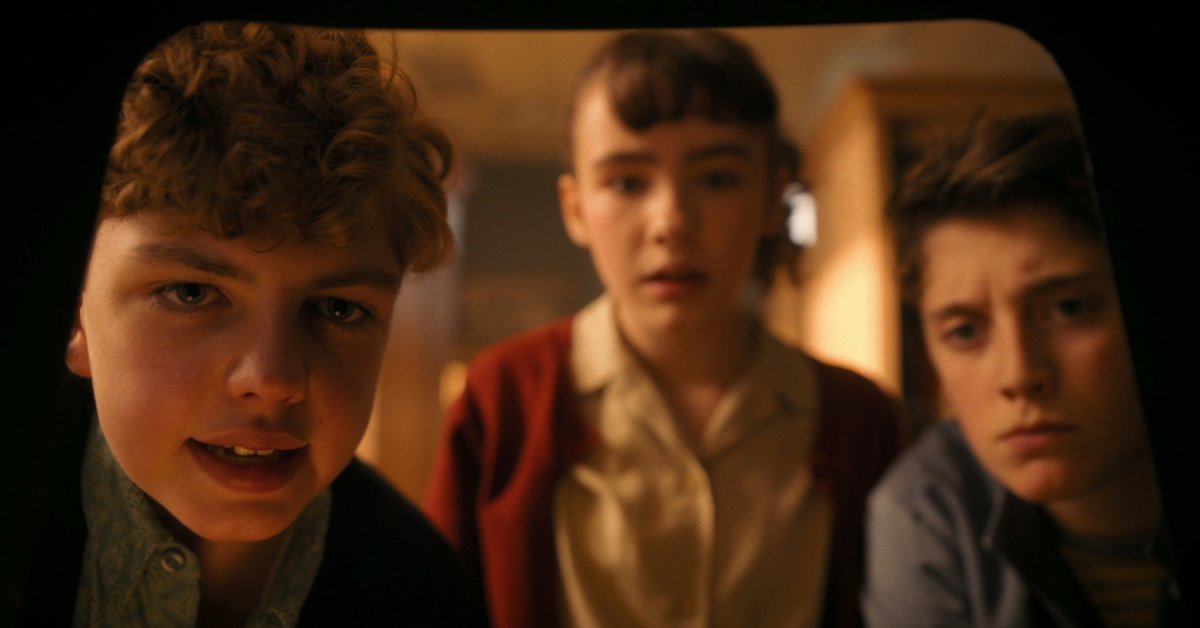The strong meaning of black nymphs in American history
In the summer, many Americans dream of awakening about the nymphs of the sea. Thousands of residency to Kony Island in New York City to show off the annual mermaid, which is decorated in water clothes. Parents together bring their children together on daily trips to the state gardens, looking for the live nymphic shows performed by acrobatic swimmers such as nymphs of the sea in Wichy Watchi Springs in Florida. Many try to summon the world of the mermaid underwater with wet hair as if the ocean was ejaculating it, which is the dark makeup that remembers the nature of the sirens, and the sequins that sparkle and kidnap the light like fish standards, all while wearing extensions of a marine nature-a fashion trend called “MermaidCore”.
This heresy, our national obsession with the nymph of the sea, was revived in the twenties of the twentieth century, in 2023, and it is now in 2025. In popular culture, the nymphs of the sea provide us with an opportunity to be exciting and exciting, to allow our problems to slip as we dip the fingers we presented in luxury. But there is another aspect to the era of the US Mermaid. In American -African history, nymphs have always been a symbol of mass rebellion. This date holds a vital lesson: it can offer escape more than the rest period; It can also generate new ways to challenge social persecution.
For several centuries, black societies of worshipers have acquired the nymphs of the sea while organizing rebellions against slavery. From the sixteenth century, the kidnapped West African ancestors brought the lives of water across the Atlantic Ocean and presented them to the New World: Simbie From Congo, Oricha (Like Ochun) from Nigeria, or Vodon (Like Ayida Wedo) from FON. In the traditions of West Africa, these water lives were worshiped to recover and protect, and took many forms, from snakes to women in the tail.
Read more: Disney is 118 million dollars in the opening of “Little Mermid”
Slaves also used a mermaid image, and they see it as a cultural sponsor of the horror institution, which is a “amazing ghary” from the safe corridor across the treacherous seas. But for the worshipers who were transferred to these ships, the mermaid was a symbol of the good rebellion and the holy traffic. This is because West Africa often saw the lives of water as judges of justice – they have maintained social harmony, and if this harmony was disturbed by human attractiveness, then the destruction of the water will surely continue.
By the nineteenth century, after thousands of forced trips throughout the Atlantic Ocean, West Africa absorbed European nymphs-from the heads of ship to a chromolite image produced by a collective Samoa female, Mama Water, Mother.
In the United States, Mami Watta appeared in several ways. This included “Cymbe” In South Carolina and Georgia in Loconri or Mama Joe in the islands Las Erzoli and Lasirèn In Louisiana Voodoo circles, such as the Mermaids of the Sea, in tales that were replaced along the lower Mississippi Valley. Mami Watta was called in black societies by the rituals that guaranteed safety, provided healing and self -cultivation. It was called by the heart symbols drawn in corn flour during voodoo rituals; Mermaid statues are made of wood, piece, beads and ribbons. Snake motifs and flowers planted in a bright quilt made of slave women along with the hand -made indoctrinum dye that they used to formulate blue jeans in the country; Springs or wells where fresh water was drawn to heal medicines and rituals.
Women who worshiped Mami Watta often evoked women – spiritual leaders in worshiping societies who could recover or toxins with their vast plant knowledge, who mediated in conflicts, and who provided reproductive care (including abortion). In the skillful years and during the reconstruction, the women who dwelling narrated stories of the mermaid to empower women and girls, as the mermaid conflicts for freedom reflect their own home abuse experiences or reproductive abuse during slavery. They were often at the center of the revolutions inspired by the mermaid.
Read more: Once, Ursula was the queen of clouds
Looking at the nineteenth century Charleston, “Mermaid Riot”, where blacks rose to protest on slavery. The African Americans stormed the worshipers and the burning of a pharmaceutical office of local white males, where the mermaid was said to be held. They demanded the release of the mermaid, and they saw its freedom linked to their logic. They have been assembled by a local woman who invokes the story of the captive marine sea to protest against the terrible conditions of enslavement – “raising” forced worshipers and the subsequent separation from their children in the auction building; The heinous experience of black women by slave doctors, such as South Carolini James Marion Sims, is called the father of gynecology; The reputable “night doctors” who stole the black bodies of medical research.

Mary Lavo (1801-1881) was the most famous in the nineteenth century, Mami Watta was worshiped in her voodoo exercise, which mixed Roman Catholicism and the traditions of urebia and the Haiti Voodoo for recovery, protection, comfort and even revenge. A free black woman of African, European and indigenous people living in New Orleans, was reported that she is “most strong A woman there is “by the former worshipers in their interviews with the Federal Writer Project. In the Voodoo traditions, Mary Lavo was strongly associated with the mermaid. The former slaves narrated stories about Lavo dancing with snakes and thickness that mixed her water.
But the nymph of the sea was not running away from reality. Instead, put it in the heart of the largest conflict in the country: slavery. The nymph of the sea that kept on its shrine was represented by Mami Watta, which was placed as the Voodwous Queen. From this position, it was distinguished for raising social rebellion. In her secret meetings of Vodo, she gave spiritual amulets that gave the courage to enslave escaping, talismans that gave troubled wives a way to take revenge, and a space for people of all classes to mix and plan the slave rebellion. To contain this tremendous threat to the ruling class, the police raided the voodoo meetings of Mary Lavo in 1850 and confiscated its mermaid statue.
Century of spiritual repression like this is one of the reasons that make a little known for black nymphs such as Mami Watta. Today, many Americans cannot even understand the idea of a black nymph, as it becomes clear from the racist decline against Disney to throw a black woman, singer Haley Billy, as Ariel in a new new edition Little Mermaid. But the black nymphs in the United States have a long -standing American history, and their songs are sirens, which is Clarion’s call to rebel against persecution.
Lindsey Stewart, Associate Professor of Philosophy, author of “Mermaids, Mermaids, Medicine, and 400 years of the charm of black women.
Made of history takes readers beyond the main headlines with articles he wrote and edited by professional historians. Learn more about making history in time here. The views expressed do not necessarily reflect the views of the time editors.




Post Comment